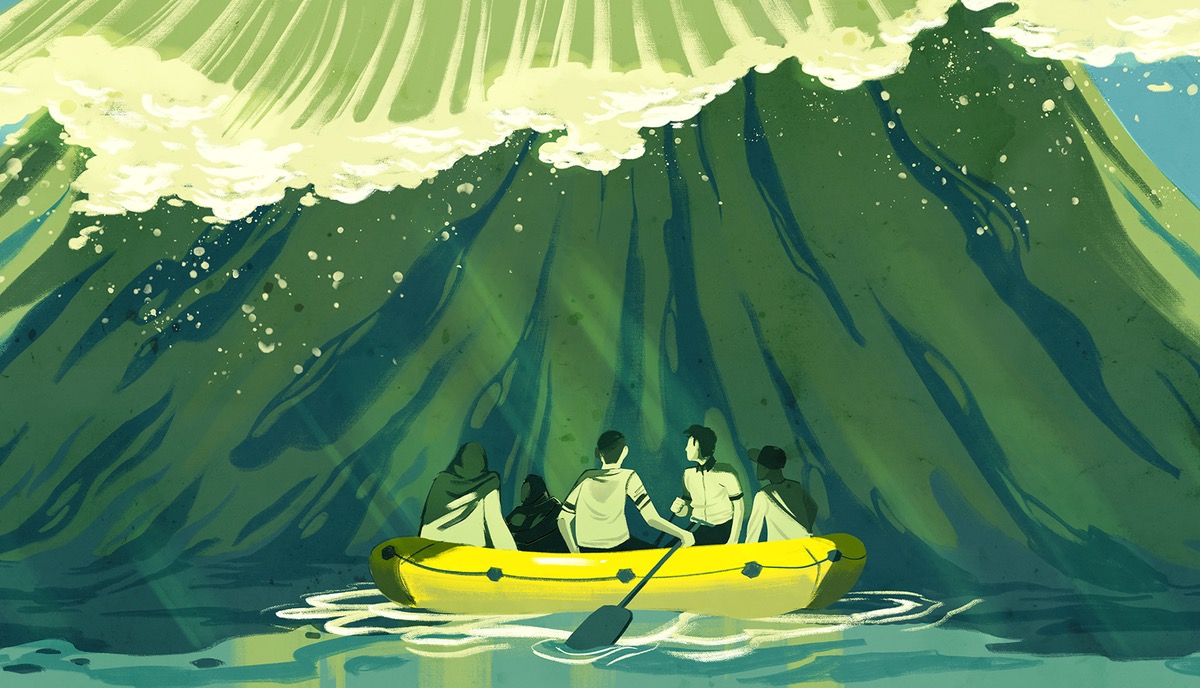Pun Fun: The Paradox of Paronomasia
A pun, nearly everyone agrees, is a play on words. Apart from the fact that the phrase “a play on words” is a good working definition of the art of poetry, this definition conceals more than reveals the functions and achievements of the pun. In fact, defining a pun that way is like defining a dictionary as an alphabetized and annotated word list, for most readers not only find that volume often useful, but we also regard the dictionary as a monument of discovery, wonder, and entertainment.
A pun is a rhyme that moves confidently beyond the simplicity of matching sounds for amusement, by discovering and emphasizing a complexity of meaning within words that the rhyme exposes. Puns are the most comprehensive attempts to pluck the web of meaning within us to demonstrate the resonance these connections produce in the sticky, silver threads that bind together the words in our vocabularies.
Punning is a form of rhyming. Considering that a pun requires not only rhyme, not only exact rhyme, but perfect rhyme, the negative reputation of puns is surprising. This point is worth emphasis: a pun demands perfect rhyme, not just the exact matching of both the final consonant sound and final vowel sound of a word, but the exact matching of the sound of the entire word. If a writer wishes to generate a connection between “mine,” what belongs to me, and “mine”, a hole in the ground that produces valuable ore, gems, and metals, then the writer must note and explore the possibilities of meaning in the match. The writer must present a perfect rhyme and apply all relevant skill to arranging the syntax and composing the lines to display the pun and generate the connection in the readers’ minds.
Puns are perfect rhymes, or homonyms, words that sound exactly the same but have different meanings. Some are homophones, words that sound exactly the same but are spelled differently, such as “hair” and “hare” or “blue” and “blew.” Others are homographs, words that sound exactly the same and are spelled the same, such as “pan” (a cooking utensil) and “pan” (to scan with a camera) or “beam” (a supporting timber) and “beam” (a ray of light). Both are valuable in producing puns. The important point here is that puns are rhymes that exceed even the basic requirements of rhyme. And rhyme is not only a traditional, accepted and expected, aspect of poetry, rhyme is a primary, essential, and fundamental aspect of much classic and contemporary poetry. No matter what the current value or  popularity, rhyme is never rejected as part of the art of poetry.
popularity, rhyme is never rejected as part of the art of poetry.
Rhyme is even celebrated when the task is only done by half, as in assonance, rhyming of only vowels, and consonance, rhyming of only consonants, both of which have other splendid uses but, by definition, are less than perfect rhyme. Even sight rhyme, which is surely the last and saddest gasp of rhyme, is noted and lauded, so that words that look alike, as though they ought to rhyme, like bough, cough, dough, and rough, are apparently acceptable. This last form of rhyme is especially contradictory because the performance mode of poetry is speech, and rhyme that doesn’t actually rhyme subverts not only the assumptions of rhyme itself, unrhyming rhyme hobbles the pursuit of poetry. But I diverge, and this path is not promising since the leaves have been trodden black by many stumbling feet.
So puns are rhymes, but the respect accorded rhyme is not often true for puns even though puns are fine examples of the most useful rhyme in poetry. There are a number of reasons. To many, puns seem too easy. The familiarity of the puns on “sun” and “son,” as in the final lines of Andrew Marvell’s “To His Coy Mistress,” or on “eye” and “I,” as in anywhere you look, still doesn’t necessarily lessen the possibilities for the impact and magnitude of puns used skillfully, instead of plugged randomly or even jammed into any outlet that appears to the writer.
Puns are mostly disparaged because readers are embarrassed when they overlook puns, both because puns are intricate, requiring a broad and deep knowledge and understanding of language and culture, and subtle, requiring a level of attention to reading that is nearly writerly. Indeed, if poetry is what’s lost in translation, then among the first losses will be puns since they rely so completely on multiple, meaningful connections among words, which are not single, simple, separate bits of language any more than an island is only a piece of land isolated by the sea. What counts most is how a word connects and draws support from the linguistic topography concealed beneath expression.
The rejection of puns is hard to respect, but the worst effect is that readers are, therefore, not alert to the pleasures and possibilities. Readers are unschooled in appreciating puns, even failing on most occasions to recognize one. And worse, puns are often dismissed as soon as they are recognized. Here is the crux: lack of understanding leads to disdain for puns, and therefore, puns are often noted in the study of literature only as flaws in otherwise respectable work. One of my college instructors actually apologized to the class for Shakespeare’s puns. Lack of appreciation for puns diminishes our literature.
Still, I am charmed by the elegance and delight of a clever pun, and I hope many others feel the same way. Scorn for puns concerns me, of course, because this time, it’s personal. I’ve employed puns to what I hope is good effect in my own work, most notably in the title poem to my forthcoming book A Million-Dollar Bill. Go, little pun, for a little pun may go a long way, and the way to weigh the significance is by how they illuminate our literature, resonating meaningfully in our ears, vocabularies, and minds. In the end, puns were good enough for Shakespeare, so they’re good enough for me.
Christian Blaza is an illustrator based in New York/ New Jersey area. Interested in editorial, sequential, and fantasy illustrations.
Recommended
Nor’easter
Post-Op Appointment With My Father
Cedar Valley Youth Poet Laureate | Fall 2024 Workshop






